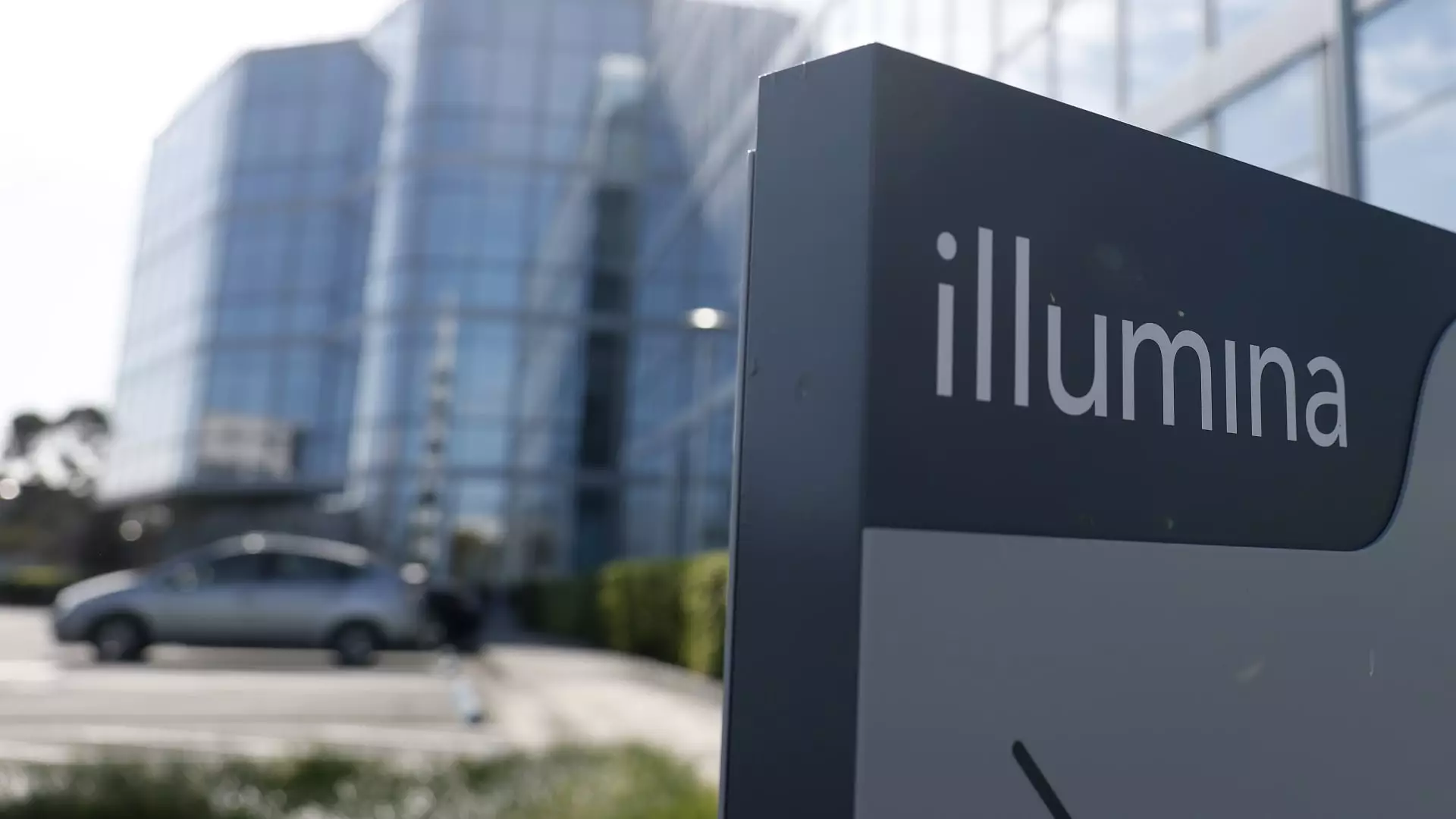Illumina’s narrative is one of incredible promise tarnished by a series of highly publicized missteps. Once the undisputed titan of the gene-sequencing arena, the company now sits precariously on the brink of irrelevance, its valuation slumping from a staggering $70 billion to a disheartening $12.67 billion. This steep decline raises serious questions about its leadership and strategic direction. The company’s reliance on its outdated technologies while competitors innovate rapidly exposes gaps in its vision and execution. Despite being a market leader, it struggles to demonstrate effective leadership that resonates with investors, as evidenced by its plummeting stock price—a mere $80 per share compared to the lofty heights of $511 in August 2021.
As Illumina grapples with its identity in an overcrowded and evolving marketplace, the lack of foresight and readiness to change is glaring. The decision to appoint Keith Meister—an activist investor—as a board member might suggest that the company’s leadership is finally acknowledging the need for insight and fresh perspectives. However, bringing in a figure experienced with corporate activism does not guarantee a strategic rejuvenation. One can only hope that Meister’s reputation for generating value in challenging scenarios will lead to a significant turnaround.
The Grail Debacle: A Case Study in Poor Decision-Making
Nothing encapsulates Illumina’s recent turmoil more than the egregious mismanagement surrounding its Grail business. After initially spinning out Grail in 2016 to leverage its potential, Illumina eventually reacquired it in a deal that was anything but straightforward. The bold $8 billion acquisition, executed without the necessary approvals from regulatory bodies such as the Federal Trade Commission and the European Union, highlights a profound lack of strategic discipline. The company’s subsequent challenges—including a hefty fine from the European Commission—underscore how complacency and poorly thought-out decisions can lead to catastrophic financial consequences.
The Grail debacle exemplifies the pitfalls of disregarding regulatory guidelines while expanding aggressively. In a market as sensitive and scrutinized as biotech, Illumina’s failure could easily be perceived as a reckless gamble rather than a strategic maneuver. This administration appears trapped in a cycle of reactive strategies, which is far from reassuring for existing and prospective investors alike.
Regulatory Headwinds: The New Business Environment
Recent geopolitical tensions and regulatory challenges are further exacerbating Illumina’s struggles. The company has faced significant setbacks in its operations in both Russia and China, resulting in lost markets and damaged credibility. Coupled with pressing uncertainties surrounding funding from the National Institutes of Health, these external pressures create a murky and unpredictable business climate. Investors rightfully question whether the current leadership can effectively steer the company through such choppy waters, especially when prior decisions have left it exposed to further market vulnerabilities.
As Illumina endeavors to restructure its operations and strengthen its core foundation, the imminent threat of slipping further into obscurity looms large. The innovative edge that once set it apart is constantly being nibbled away by competitors who are not waiting for their larger rival to find its footing.
Aging Technology: The Transition to NovaSeq X
At the core of Illumina’s difficulties lies its struggle to transition to the new generation of sequencing technology—NovaSeq X. While technological evolution is par for the course in any company, the imperative for a successful shift cannot be overstated. Illumina must grapple with the immediate financial strains that often accompany such transitions, as customers hold back on investments during uncertain periods.
Yet the real question is whether the company has adequately prepared for this evolution. Failure to transition effectively could redefine Illumina as a relic of the past rather than a pioneer for the future. Given that they command over 80% of the market share, a weak response to this critical juncture has implications that reverberate well beyond their balance sheet.
New Leadership: A Hopeful Dawn or Just a Facade?
With the addition of Scott Gottlieb as the non-executive chair, Illumina appears to be trying to assemble a leadership team that can navigate the treacherous waters ahead. Gottlieb’s extensive background in healthcare policy and corporate governance might present an opportunity for recalibrating Illumina’s strategic direction. However, fresh faces alone cannot guarantee recovery; it requires timely and well-informed decision-making.
Investors are left hoping that Gottlieb’s influence and Meister’s presence will steer the company back to a prosperous standing. Yet, if Illumina wishes to transcend its current turmoil, it must confront its past mistakes head-on while committing itself to innovation and long-term thinking. The time for reactionary measures has passed—only the bold and strategic will survive in this unforgiving landscape.
In the face of these challenges, Illumina stands at a crossroads, where miscalculation and complacency can hedge against its potential for recovery. What remains to be seen is whether the company can awaken from its stagnation or continue its disturbing trend into irrelevance.

